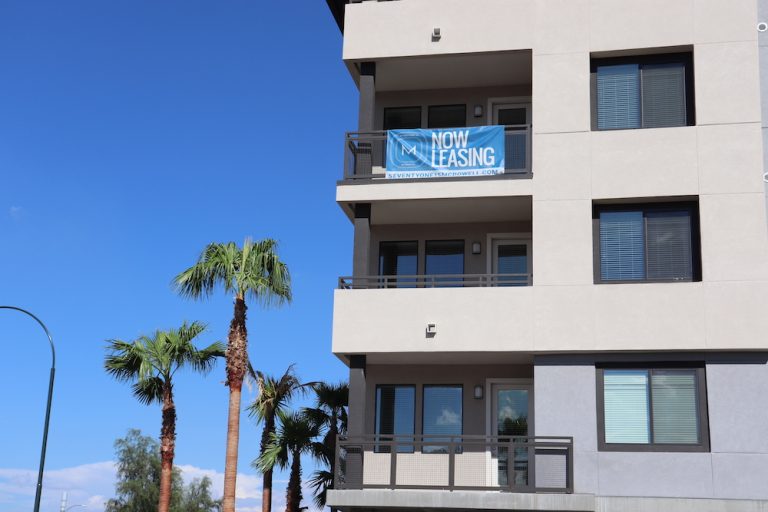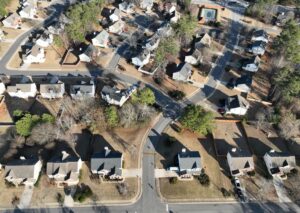In an almost-post-pandemic world, housing remains one of the largest concerns for U.S. citizens. Rent in metropolitan areas across the country has been climbing quickly over the last decade and the pandemic has only exacerbated popular hot spots in the last two years.
During the early stages of the pandemic, many people fled major cities due to the unknown spreading of COVID-19. From March 2020 to Feb. 2021, Pew reported 2.9 million people moved out of densely populated urban areas.
With an uncertain duration for stay-at-home orders, millennials, many of whom became parents, wanted to move somewhere that had a city, with surrounding suburban areas where they could purchase a home with a yard and enjoy a bit of both worlds. These suburban areas near bigger metro areas attracted individuals, families and businesses, Pew found.
In 2020, Pew found that Florida, Texas, Arizona, South Carolina and North Carolina all saw inbound moves 30% higher than average. Even though affordable housing in those states were hard to find, they were still cheaper than the major metropolitan areas movers were coming from such as Los Angeles, San Francisco, Seattle, and New York City.
Population growth outpaces affordability
Each of the states that saw an increase in population during the pandemic also were reported to have the highest percentage of people with extremely low incomes and the least amounts of available and affordable housing, a national report found.
Each year the National Low Income Housing Coalition gathers information to report on the trends nationwide. Released in Apr. 2022, the most recent report shows Arizona, California, Colorado, Florida, Nevada, Texas and Oregon as the states with 30 or fewer affordable and available housing units per 100 people with extremely low incomes.
Households who are at or below the poverty guideline face housing shortages in each state. The country now needs 7 million affordable rental homes to fill this shortage, NLIHC reported.
Some major metropolitan areas in each of those states saw both population and one-bedroom apartment price increases over the last 11 years. For example, Denver County in Colorado saw an increase of nearly $700 for a one-bedroom apartment in the last 11 years. Multnomah County, which houses Portland, saw an increase of almost $650, with other metro areas following closely behind.
Maricopa County of Arizona is the country’s fourth largest county and also the fastest growing, with over 700,000 new residents since 2010. Phoenix was the fastest growing city from 2018-2019 and boomed during the pandemic, with over 13,000 new people from July 2020-2021, a 2022 article by the Census Bureau found.
In places that grew both in population and popularity, the disparities for affordable and available housing also saw a climb. According to the most recent report from NLIHC, people facing housing insecurity have been disproportionately affected by the pandemic. The report found that people of color bore the brunt of these housing disparities as they are more likely to be renters and have low or extremely low incomes.
One-quarter of all renter households, or 11 million renters, are people with extremely low incomes. Almost half of them are seniors or have a disability; the other half are in the labor force, in school or are single-adult caregivers, the report found.
Surplus of luxury apartments
People were struggling with housing insecurity before the pandemic and that has not changed. As of March 2022, 5.5 million renter households reported they were behind on rent. Although government organizations tried to help in the early stages of the pandemic, eviction moratoriums and funding from Congress’ Emergency Rental Assistance ran out. The NLIHC found that no state has an adequate supply of affordable and available housing for these renters. And if anything, it may be the opposite.
Apartments listed as “luxury” or “high-end” are attracting a new group of people. Following the financial crisis of 2008, home prices in the last decade have been higher than ever, forcing a lot of millennials to choose apartment rentals rather than follow in their parents’ footsteps in home ownership.
A 2018 report by RentCafe found that 8 out of 10 apartment buildings being built nationwide were listed as luxury or high-end. These include more square footage, and nicer amenities and furnishings.
Out of the seven states NLIHC reported with the least available and affordable housing, two of the cities that saw population growth in the 10 years before the pandemic and during the pandemic also had the most luxury apartments available according to an Aug. 31 search on Apartments.com.
“Tipping the scales of housing justice”
As work-from-home opportunities are increasing, people have the ability to work digitally and move based on destination, rather than a commute to the office. A Feb. 2022 study by Pew found that 6 in 10 Americans are working from home or have some sort of hybrid schedule.
Virtual work opportunities are exacerbating housing affordability in these states, causing mid-level housing landlords to hike prices to stay competitive. NLIHC notes that the private market alone cannot fix this issue. Government assistance in providing affordable housing to extremely low-income people is necessary but comes with a price tag. There are not sufficient incentives for landlords to maintain older housing and development and operating costs to fill that 7 million person gap is too hefty for people to jump on board, they reported.
“A large-scale, sustained commitment to programs … that provide affordable housing for people with the lowest incomes can correct such failures of the market and tip scales toward housing justice,” the NLIHC report said.










